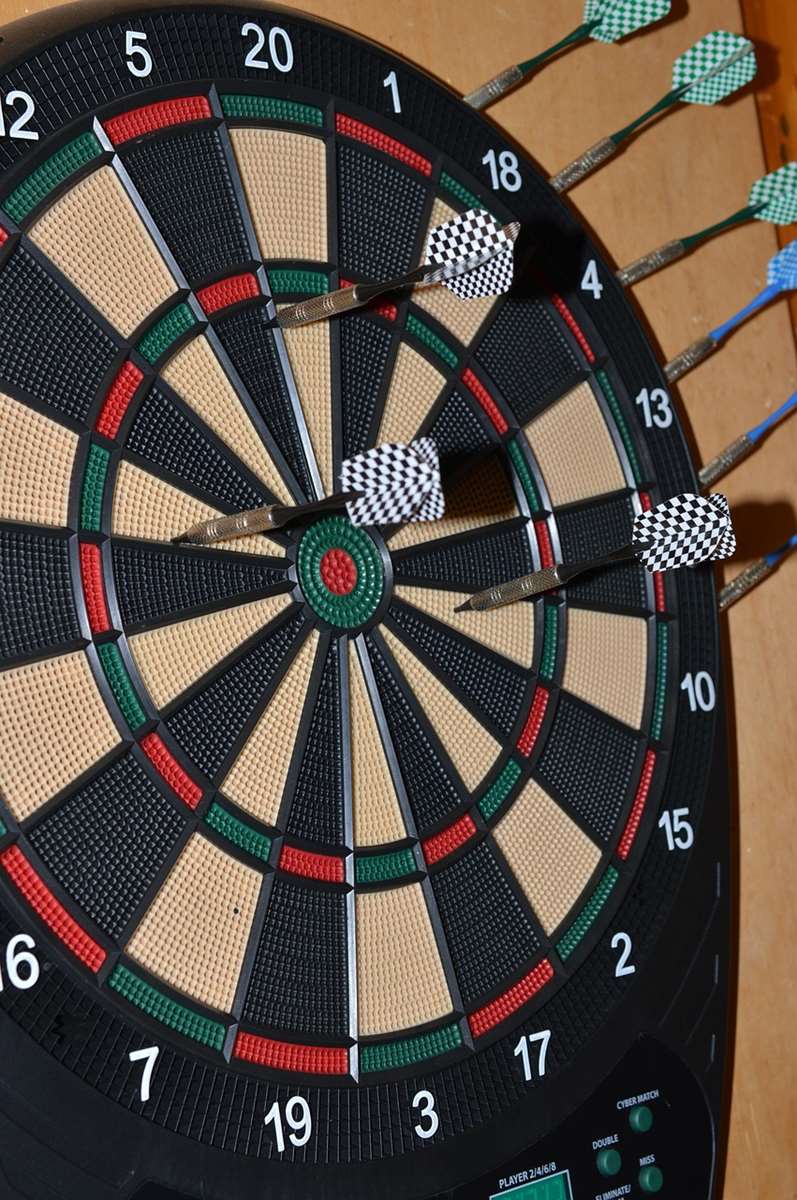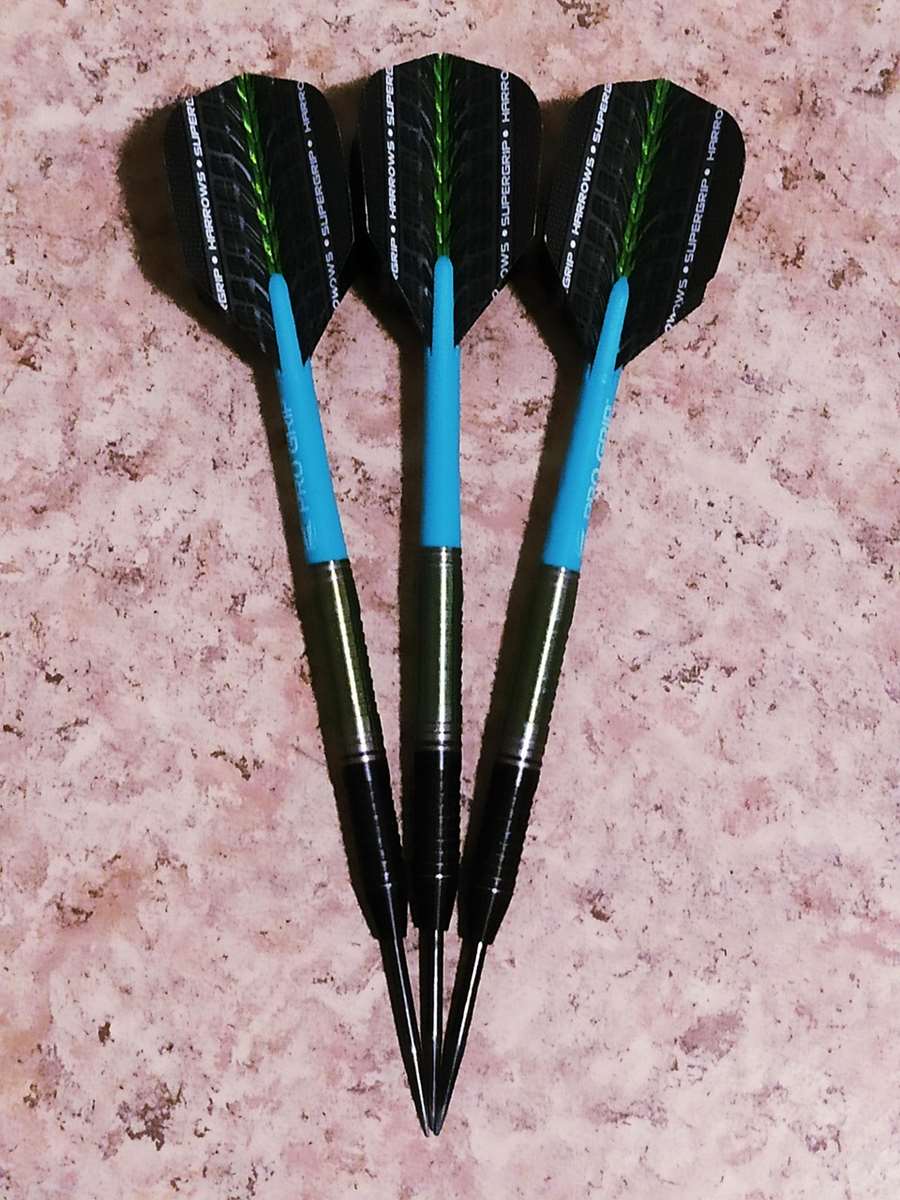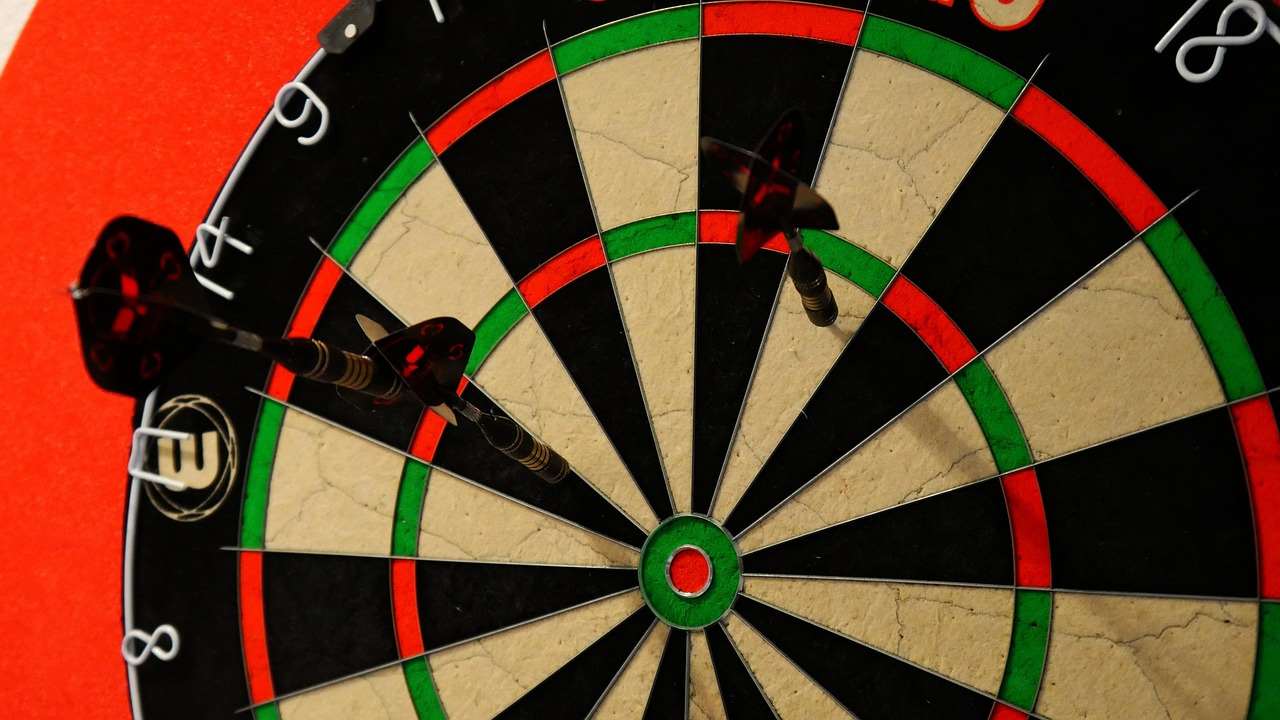The key to calculating score Baseball darts end lies in treating each round like an inning, focusing on hitting the corresponding numbered section of the dartboard to score runs. This article will break down the rules, scoring methods, and strategies involved in this exciting darts variation, helping you master the game and accurately track your performance.
⚠️ Still Using Pen & Paper (or a Chalkboard)?! ⚠️
Step into the future! The Dart Counter App handles all the scoring, suggests checkouts, and tracks your stats automatically. It's easier than you think!
Try the Smart Dart Counter App FREE!Ready for an upgrade? Click above!
Understanding the Basics of Baseball Darts
Baseball darts is a fun and engaging variant of traditional darts that combines elements of baseball scoring with the precision of dart throwing. Unlike 501 or cricket, where the goal is to reach zero or close out numbers, the aim in Baseball darts is to score the most “runs” over a predetermined number of “innings”. These innings directly correlate with specific numbers on the dartboard. The game is played over nine innings, just like a real baseball game, but can be shortened if desired.
The essential components you need to understand are the inning system (corresponding to the numbers on the dartboard), the scoring system (similar to baseball runs), and the overall objective (to score the most runs by the end of the game). Understanding how these components work together is crucial for calculating score Baseball darts end effectively.

Setting Up the Game
- The Players: Baseball darts can be played with two or more players.
- The Dartboard: A standard dartboard is required.
- The Innings: Each “inning” corresponds to a number on the dartboard. The game typically consists of nine innings, using the numbers 1 through 9 in order.
- The Rounds: Each player throws three darts per inning, representing their attempts to score runs.
How to Score Runs in Baseball Darts
The scoring in Baseball darts is straightforward, but understanding the target areas is key. Each inning focuses on a specific number on the dartboard, corresponding to the inning number. For example, in the first inning, players aim for the number 1; in the second inning, they aim for the number 2, and so on.
Here’s how points are awarded:
- Single: Hitting the single area of the inning number scores one run.
- Double: Hitting the double area of the inning number scores two runs.
- Triple: Hitting the triple area of the inning number scores three runs.
- Misses: Missing the inning number results in zero runs for that dart.
Calculating score Baseball darts end involves totaling the runs scored across all nine innings. The player with the highest total score at the end of the ninth inning wins the game. Understanding these scoring mechanics is essential for accurate scorekeeping and strategic play.
Example Scoring Scenario
Let’s illustrate with an example. In the first inning, a player aims for the number 1. Their three darts result in:
- Dart 1: Single 1 (1 run)
- Dart 2: Triple 1 (3 runs)
- Dart 3: Miss (0 runs)
The total score for that player in the first inning is 1 + 3 + 0 = 4 runs. This process is repeated for each inning, with the target number changing according to the inning number. The cumulative score is maintained until the end of the ninth inning.

Strategic Tips for Baseball Darts
While Baseball darts is relatively simple to learn, strategic thinking can significantly improve your game. Here are a few tips to consider:
- Accuracy is Key: Focus on hitting the target number consistently. Even if you don’t always hit triples, consistent singles and doubles will accumulate runs.
- Targeting Doubles and Triples: While accuracy is paramount, aiming for doubles and triples can dramatically increase your score. Assess your skill level and risk tolerance before attempting these higher-scoring shots.
- Adapt Your Strategy: If you’re consistently missing the target number, adjust your aim or stance. Don’t be afraid to experiment to find what works best for you.
- Mental Game: Stay focused and positive. Even if you have a bad inning, remember that there are more innings to come.
These strategies, combined with a solid understanding of the scoring system, can help you effectively calculating score Baseball darts end and increase your chances of winning.
Consider exploring Darts Variants Fun Games to diversify your dart playing experience!
Variations and Adjustments to Baseball Darts Rules
Like many dart games, Baseball darts can be adapted to suit different skill levels and preferences. Here are some common variations and adjustments you can make:
Shortened Game
For shorter games, you can reduce the number of innings. A five-inning game, using the numbers 1 through 5, is a common alternative.
Advanced Play
For more advanced players, you can introduce additional rules, such as requiring a specific number of runs to be scored in the final inning to win the game, or adding bonus points for hitting specific combinations of targets.
Handicap System
To level the playing field between players of different skill levels, you can implement a handicap system. For example, weaker players could be given a starting run advantage or allowed to start their innings from a closer distance. This approach links well with Handicap system fun dart games.
The Importance of Accurate Scorekeeping
Accurate scorekeeping is crucial for maintaining the integrity of the game and ensuring fair competition. Whether you’re playing casually or in a tournament, keeping a clear and accurate record of each player’s score is essential.
Here are some tips for accurate scorekeeping:
- Use a Scoreboard: A physical scoreboard or a digital scorekeeping app can help you track scores easily and accurately.
- Record Each Dart: Note down the result of each dart thrown, whether it’s a single, double, triple, or miss.
- Double-Check Scores: At the end of each inning, double-check the scores to ensure they are correct.
- Designate a Scorekeeper: Assign one person to be responsible for scorekeeping to avoid confusion and ensure consistency.

Using Technology to Enhance Your Baseball Darts Experience
In today’s digital age, various apps and online tools can enhance your Baseball darts experience. These tools can assist with scorekeeping, provide statistical analysis, and even offer virtual opponents to play against.
- Scorekeeping Apps: Numerous dart scorekeeping apps are available for smartphones and tablets. These apps often include features such as automatic score calculation, game history tracking, and player statistics.
- Online Darts Platforms: Several online platforms allow you to play darts against other players from around the world. These platforms often include built-in scorekeeping and statistical analysis tools.
- Training Apps: Some apps are designed to help you improve your dart throwing skills. These apps may offer virtual targets, skill-building exercises, and performance tracking features.
Leveraging these technological resources can streamline the process of calculating score Baseball darts end and provide valuable insights into your game.
Consider Adapting darts games skills for enhanced gameplay experience!
Common Mistakes to Avoid When Calculating Scores
Even with a clear understanding of the rules, it’s easy to make mistakes when calculating score Baseball darts end. Being aware of these common errors can help you avoid them and ensure accurate scorekeeping.
- Miscounting Runs: Ensure you accurately count the runs scored for each dart. Double-check your calculations to avoid errors.
- Forgetting to Update the Scoreboard: Remember to update the scoreboard after each player’s turn. Failing to do so can lead to confusion and inaccurate scores.
- Incorrectly Identifying Target Areas: Make sure you are targeting the correct number for the current inning. Confusing the target area can result in incorrect scoring.
- Ignoring Missed Darts: Remember that missed darts score zero runs. Don’t forget to account for misses when calculating the total score for each inning.

Advanced Strategies for Baseball Darts
Once you’ve mastered the basics of Baseball darts, you can explore more advanced strategies to elevate your game. These strategies involve a deeper understanding of probability, risk management, and opponent analysis.
Target Prioritization
Assess the probabilities of hitting different areas of the target number. If hitting a triple is unlikely, focus on consistently hitting singles and doubles. This consistency strategy can be useful when Darts games different skill levels are playing together.
Risk Management
Evaluate the risk versus reward of aiming for doubles and triples. If you’re ahead in the game, it might be safer to play conservatively and aim for singles. If you’re behind, you might need to take more risks to catch up.
Opponent Analysis
Pay attention to your opponent’s tendencies and weaknesses. Exploit their weaknesses by targeting areas they struggle to hit and adapting your strategy accordingly.

Maintaining a Positive Mindset
Regardless of your skill level, maintaining a positive mindset is crucial for enjoying Baseball darts and improving your performance. Darts can be a mentally challenging game, and staying positive can help you overcome setbacks and maintain focus.
- Focus on the Present: Don’t dwell on past mistakes. Focus on the current inning and the darts you have left to throw.
- Stay Confident: Believe in your ability to hit the target numbers. Confidence can improve your accuracy and consistency.
- Enjoy the Game: Remember that Baseball darts is a game, and the primary goal is to have fun. Relax and enjoy the experience, regardless of the outcome.
Conclusion
Calculating score Baseball darts end is a relatively straightforward process, but mastering the game requires understanding the rules, implementing strategic thinking, and maintaining accurate scorekeeping. By following the tips and strategies outlined in this article, you can improve your Baseball darts skills, enhance your enjoyment of the game, and accurately track your progress. So, grab your darts, gather your friends, and start playing!
Ready to take your dart game to the next level? Head over to our resources section for more in-depth guides and equipment reviews. Start improving your game today!
Hi, I’m Dieter, and I created Dartcounter (Dartcounterapp.com). My motivation wasn’t being a darts expert – quite the opposite! When I first started playing, I loved the game but found keeping accurate scores and tracking stats difficult and distracting.
I figured I couldn’t be the only one struggling with this. So, I decided to build a solution: an easy-to-use application that everyone, no matter their experience level, could use to manage scoring effortlessly.
My goal for Dartcounter was simple: let the app handle the numbers – the scoring, the averages, the stats, even checkout suggestions – so players could focus purely on their throw and enjoying the game. It began as a way to solve my own beginner’s problem, and I’m thrilled it has grown into a helpful tool for the wider darts community.